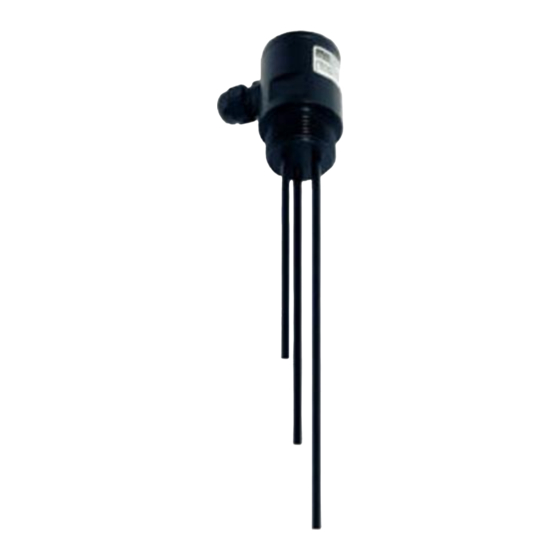
Advertisement
Technical manual
SAT
Electrode probe
for conductive limit level detection
in electrical conductive liquids
Detects up to six limit values simultaneously
Useable
for leakage or overflow protection in container
for minimum, maximum resp. multilevel detection in container
as pump protection, resp. dry run protection in pipelines
for two-position-control of pumps
Wide application range
for conductivities higher than 1 µS/cm
for process temperatures from -15 °C to +150 °C
for process pressures from -1 bar to +10 bar
materials also for aggressive filling material
ATEX II 1 G Ex ia IIB/IIC T6...T1 Ga
Certification for the use in explosion hazardous areas
Integrated wire break monitoring
L a u t e r b a c h s t r . 5 7 – 8 4 3 0 7 E g g e n f e l d e n – G e r m a n y
T e l : + 4 9 8 7 2 1 / 9 6 6 8 - 0 – F a x : + 4 9 8 7 2 1 / 9 6 6 8 - 3 0
i n f o @ a c s - c o n t r o l s y s t e m . d e
BA 1118
–
w w w . a c s - c o n t r o l s y s t e m . d e
Filling level
Advertisement
Table of Contents

Subscribe to Our Youtube Channel
Summary of Contents for ACS contsys SAT
- Page 1 Technical manual BA 1118 Filling level Electrode probe for conductive limit level detection in electrical conductive liquids Detects up to six limit values simultaneously Useable for leakage or overflow protection in container for minimum, maximum resp. multilevel detection in container ...
-
Page 2: Table Of Contents
Index Application field ......................3 Function ........................3 Safety notes ......................3 Installation ........................4 Maintenance ......................... 4 Repair ..........................5 Electrical connection ..................... 5 page 2 of 9... -
Page 3: Application Field
Application field The electrode probe SAT, in combination with a suitable evaluation device, is used for conductive limit value detection in electrically conductive filling materials. Depending on the application, the electrode rods can have a length of up to 3 m. -
Page 4: Safety Notes
Safety notes Operational safety The device is safely built and tested according to state-of-the-art technology and has left the factory in perfect condition as regards technical safety. The device meets the legal requirements of all relevant EC directives. This is confirmed by attaching the CE mark. -
Page 5: Installation
Installation The isolation of the electrode rod may not be damaged resp. removed excepted at the electrode tip. The electrode rods can be cut arbitrarily by a tong or a saw. After cutting the electrode rod, remove 10 mm of the isolation. -
Page 6: Repair
Repair A repair may only be carried out by the manufacturer. If the device must be sent back for repair, the following informations must be enclosed: An exact description of the application. The chemical and physical characteristics of the product. ... - Page 7 Technical data Materials Electrode rod: Steel 1.4404 (AISI316L) resp. 1.4571 (AISI316Ti) / Hastelloy C22 (medium contact) Electrode rod isolation: PA / ETFE resp. E-CTFE (medium contact) Process connection: POM / PP / PTFE (medium contact) Terminal enclosure: POM / PP / PTFE Cable gland: Enclosure PA / gaskets CR, NBR Gaskets:...
- Page 8 Dimension drawings Terminal enclosure Terminal enclosure 40mm 60mm (only with material POM) Process connection Process connection G12 – G ½“ G10 – G 1“ with terminal enclosure 40mm or 60mm (only with material POM) Process connection Process connection G20 –...
- Page 9 Diameter electrode rod 4 mm (L1 max. 2000mm) W 8 mm (L1 max. 3000mm) Length L1 electrode rod in mm Length L2 electrode isolation in mm SAT _ _ _ _ _ _ _ _ _ _ page 9 of 9...






Need help?
Do you have a question about the SAT and is the answer not in the manual?
Questions and answers